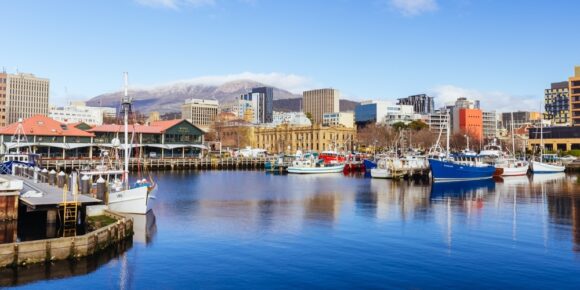Australia’s wine industry has long been a global powerhouse, contributing more than $45 billion to the economy each year. However, in September 2024, a sudden and severe frost event left many vineyards, particularly in South Australia, grappling with a painful truth: they were unprotected and out of pocket.
With frost insurance all but vanished from the traditional market, the $2 billion in damages landed directly on winery balance sheets. That’s left growers and everyone who relies on their product, asking what comes next.
“This was another setback for an industry already doing it tough in the face of global economic pressures,” said Lynn Roehrig, Head of Business Development for Descartes Underwriting in Australia and New Zealand.
Global wine exports and sales are down, and increasingly extreme weather is making each harvest more unpredictable than the last. For producers, it’s a brutal combination. For restaurateurs and venue operators, it signals likely flow-on effects: tighter supply, higher prices, and potential changes to vintage quality and availability.
Insurance is no longer a safety net
The wine industry’s usual safety net, comprehensive crop insurance, has been shrinking for years. Coverage for key risks like heat, hail, and frost is no longer offered by most traditional insurers.
Parametric insurance is emerging as a viable alternative. Instead of relying on assessors and damage inspections, it pays out automatically when predefined triggers (like a temperature below -2°C) are met during a high-risk period.“Traditional insurance simply doesn’t offer this type of coverage anymore, largely due to the severity of particular events in recent years,” Roehrig said.
Loses to Shiraz and Cabernet Sauvignon crops
The 2024 frost event hit at a critical point in the season. Early warm weather brought on bud burst ahead of schedule, followed by a dramatic temperature drop. In South Australia’s Barossa Valley, growers recorded lows of -4°C, cold enough to render frost fans useless.
One 80-hectare vineyard lost nearly all its Shiraz and Cabernet Sauvignon crop, tallying damages of around $1 million.
“Because a lot of the big growers have grapes growing in different regions, they can source grapes from elsewhere if they get hit by an event,” Lynn said.
“But then there are single-vineyard vintages that only grow in one spot, so if those are impacted, they will suffer a significant loss because they can’t bring grapes in from somewhere else. Region-wide events could also see reductions in yield numbers.”
Why it matters for hospitality
The implications go far beyond the farm gate. Single-vineyard vintages, limited releases, and premium South Australian drops are staples on restaurant wine lists. They drive margins, anchor pairings, and attract a loyal dining audience.
But when crops fail, those wines disappear. And with climate events becoming more extreme, consistency is no longer guaranteed. Restaurateurs and sommeliers may increasingly find themselves asking suppliers not just what’s available, but why something’s not.
Building back with better protection
Descartes is now working with brokers in the Barossa, McLaren Vale and Riverland to help vineyards get coverage back on the table, offering data-driven parametric frost insurance built around a grower’s specific conditions and seasons.
Their model uses local temperature data, whether from onsite weather stations or public sources like the Bureau of Meteorology (BoM), to create custom policies tied to critical growth stages.
“If an extreme climate event hits, insured clients have peace of mind that their coverage can kick in when needed, covering all kinds of losses, including non-damage business interruption. Clients receive immediate income stability,” Roehrig said.
For venues that rely on Australian wine, the frost crisis serves as a stark reminder of just how fragile the supply chain can be. Behind every bottle is a grower navigating the reality of climate risk, with fewer tools than ever to soften the blow.
The hope now is that new tools like parametric insurance will give producers, and the wider industry, a fighting chance.







